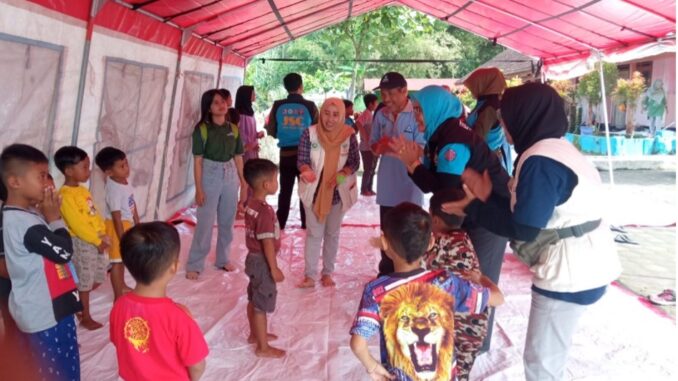
Lessons Sharing from Indonesia for Myanmar and the Region
When an earthquake strikes, the damage is immediately visible — crumbled homes, collapsed schools, broken roads. But some of the most lasting and devastating impacts can’t be seen. They are carried quietly in the minds and hearts of survivors.
Indonesia, a country long familiar with the trauma of disasters, has learned this lesson again and again. From Aceh to Lombok to Palu, we’ve come to understand that Mental Health and Psychosocial Support (MHPSS) is not a “soft” or optional intervention. It is a life-saving, recovery-enabling component of any serious humanitarian response.
|
As Myanmar confronts the devastation caused by its recent earthquake, the humanitarian community has a responsibility to ensure that support for mental health and psychosocial well-being is not treated as an afterthought — but as a core priority from day one.
Lessons from Indonesia: What Works in MHPSS
Mental health needs after disasters are often widespread but unequally acknowledged. While some groups are at higher risk, the reality is that distress can affect anyone. What matters is not just who is affected — but how we listen, respond, and support.
Over the past two decades, Indonesia has built practical, community-based models of MHPSS that can guide other countries facing large-scale disasters:
- Early integration into health and emergency teams — Embedding mental health professionals into mobile clinics and community outreach, starting from the first week.
- Community-based support — Training teachers, religious leaders, and volunteers in basic psychosocial first aid, enabling culturally sensitive care that people trust.
- Support for caregivers and responders — Peer support groups, debriefing, and referral pathways for humanitarian workers.
- Child and Women Friendly Spaces — Establishing child-friendly and women-friendly spaces and psychosocial programs in temporary schools or in evacuation centres can help children regain normalcy and express emotions.
- Long-term pathways to care — Connecting acute MHPSS services to the formal health system for ongoing support, even years after the disaster.
In Lombok Earthquake Response (2018), children’s emotional recovery was accelerated through school-based psychosocial programs. In Palu, frontline workers were provided with structured debriefings and mental health referrals. These are small investments — with big impacts.
Mental Health Is Not a Luxury — It’s a Right
Too often, MHPSS is pushed to later phases, funded last, and treated as optional. But trauma, grief, and stress don’t wait. They grow quietly. And if unaddressed, they can derail a person’s recovery — or an entire community’s future.
Disasters don’t just break buildings. They break what holds people together. Mental health support is the glue that helps rebuild lives with dignity, resilience, and hope.
A Call to Action for Myanmar and the Humanitarian Community
As Myanmar and its partners mobilize to recover from the devastating earthquake, this is a critical window to integrate MHPSS in the overall response. We call on:
- Policy makers and humanitarian leaders to include MHPSS from the start — not as a separate track, but embedded across health, education, and protection.
- Donors to allocate dedicated funding for MHPSS programming from day one.
- NGOs and responders to care for their own teams and recognize that the well-being of aid workers directly affects the quality of care delivered.
Let us not wait for the scars to show before we act. Let us build recovery models that recognize healing — both visible and invisible — as essential, urgent, and universal.
We welcome your thoughts.
This article is part of a series reflecting on Indonesia’s experience in disaster response, aimed at contributing to shared learning and regional dialogue — particularly in the context of the Myanmar earthquake response. We warmly invite others to share their perspectives, experiences, and ideas.
For comments or contributions, please contact the MPBI Secretariat at mpbi.sekretariat@gmail.com . To learn more about our work, visit www.mpbi.info .
Full document click here


Leave a Reply